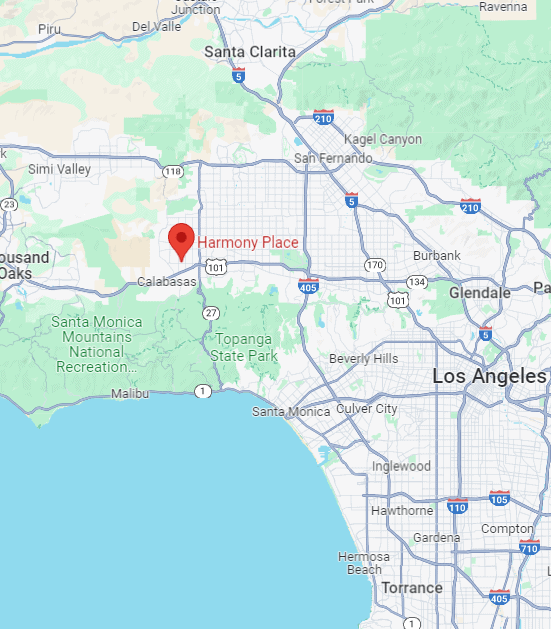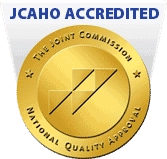Drug Withdrawal Treatment in Los Angeles, California
At Harmony Place, we provide expert drug withdrawal treatment in Los Angeles, helping clients navigate withdrawal safely and comfortably. Our approach blends medical oversight with personalized care, ensuring each individual receives comprehensive support through every stage of withdrawal and early drug addiction recovery.
Drug withdrawal can be intense, both physically and emotionally. That’s why our Los Angeles-based rehab center offers 24/7 monitoring, evidence-based drug withdrawal management protocols, and medications that ease symptoms without disrupting long-term healing. Whether you or your loved one needs urgent drug withdrawal help or a full continuum of care, Harmony Place is equipped to support lasting recovery in a safe, structured environment.
What Is Drug Addiction and Substance Use Disorder?
Drug addiction, also referred to as substance use disorder (SUD), is a condition that involves the compulsive use of drugs despite adverse consequences. Those who struggle with this disorder often experience physical dependence, which can lead to tolerance and substance withdrawal symptoms. Once drug dependency reaches this stage, it’s difficult to stop using the drug.
Substance use disorder significantly impacts how you function in daily life and maintain healthy relationships. It can affect various aspects of your life, including work, family, and social interactions. The long-term effects of drug use can also include physical problems, such as cardiovascular disease, liver damage, respiratory issues, and weakened immune function, as well as mental health conditions.
Understanding Drug Dependence
Drug dependence is when you develop a physical and psychological reliance on a substance, leading to compulsive use despite adverse outcomes. Signs of drug addiction may include an increased tolerance to the substance, withdrawal symptoms when not using, neglecting responsibilities, changes in behavior or relationships, and a preoccupation with using the drug.
Drug addiction can impact your health, relationships, and overall quality of life. If you are dependent, you may find it challenging to control drug use, leading to a cycle of cravings and consumption. Understanding drug dependence is crucial for recognizing the need for treatment and support, as this condition often requires professional help for addiction recovery.
What Is Drug Withdrawal Syndrome?
Drug withdrawal syndrome is a set of physical and psychological symptoms that often occur when you abruptly reduce or stop using a substance you are dependent on. Symptoms of drug withdrawal can vary in intensity and duration, depending on the drug involved, the level of dependence, and overall health.
Drug withdrawal syndrome symptoms can include anxiety, irritability, nausea, tremors, sweating, and seizures, among other physical and mental symptoms. While these symptoms are uncomfortable, they can even be life-threatening, making medical supervision during the withdrawal process essential.
Understanding substance withdrawal symptoms is an important first step in the recovery process. If you think you need drug dependency treatment, contact us at Harmony Place Drug and Alcohol Treatment Center. Our team is here to discuss the signs of drug withdrawal and the drug detox programs we offer.
What Are Signs and Symptoms of Drug Withdrawal?
Recognizing the signs and symptoms of drug withdrawal is crucial for anyone experiencing dependence on substances. Withdrawal can manifest in a variety of physical and psychological symptoms. These can vary in intensity and duration depending on the drug, the level of dependence, and individual factors.
Being aware of the signs and symptoms of drug withdrawal can help you understand what to expect during the drug withdrawal process and empower you to seek appropriate support. Below are common signs and symptoms of drug withdrawal.
Physical Symptoms
During drug withdrawal, you may experience a range of physical symptoms that can be uncomfortable and distressing. These symptoms often vary based on the substance involved and your level of dependence. Understanding these physical signs can help you recognize the challenges you might face during withdrawal.
Common physical symptoms of drug withdrawal include:
- Fatigue: Constant lack of energy that affects your daily activities.
- Muscle Pain and Cramps: Generalized aches and cramps, particularly prevalent in opioid withdrawal.
- Sweating: Excessive sweating, especially during the acute phase of withdrawal.
- Headaches: Tension-related headaches or those caused by fluctuations in blood pressure.
- Nausea and Vomiting: Often associated with withdrawal from opioids, alcohol, or stimulants.
- Diarrhea or Stomach Cramps: Gastrointestinal distress that frequently occurs in opioid withdrawal.
- Tremors or Shakiness: Noticeable shaking in your hands or body, particularly with benzodiazepine or stimulant withdrawal.
- Heart Palpitations: Irregular or rapid heartbeats that may cause concern.
- Appetite Changes: Either a decrease in appetite or, occasionally, an increase in hunger.
- Insomnia: Difficulty falling asleep at night or staying asleep, a widespread symptom across various drugs.
- Dilated Pupils: Particularly noticeable during opioid withdrawal.
- Runny Nose and Watery Eyes: Common symptoms associated with opioid withdrawal.
Psychological Symptoms
Alongside physical symptoms, drug withdrawal can also lead to significant psychological challenges. You may encounter various emotional and mental health issues as your body adjusts to the absence of the substance. Recognizing these psychological symptoms can help you understand your experience and seek support.
Common psychological symptoms of drug withdrawal include:
- Anxiety: Feelings of restlessness, worry, or panic that may intensify during withdrawal.
- Depression: A sense of sadness, hopelessness, or lack of motivation, often observed in stimulant and cannabis withdrawal.
- Mood Swings: Sudden fluctuations in mood, irritability, or emotional instability.
- Agitation and Irritability: Increased agitation and irritability, commonly experienced in stimulants, cannabis, and benzodiazepine withdrawal.
- Drug Cravings: Intense urges to use the drug, prevalent across most substances.
- Paranoia: Feelings of distrust or suspicion, particularly evident during stimulant withdrawal, such as from methamphetamine or cocaine.
Cognitive Symptoms
Cognitive symptoms can also appear during drug withdrawal, affecting your ability to think clearly. These cognitive symptoms can significantly impact your daily functioning and decision-making skills. Being aware of these cognitive challenges is essential for navigating the drug withdrawal process.
Common cognitive symptoms of drug withdrawal include:
- Confusion and Clouded Thinking: Difficulty focusing or making decisions, often seen in opioid and benzodiazepine withdrawal.
- Memory Problems: Trouble recalling recent events or maintaining focus on tasks.
- Hallucinations: Experiencing visual, auditory, or tactile hallucinations, especially during severe withdrawal from benzodiazepines or stimulants.
- Poor Coordination: Difficulty with motor skills, particularly following benzodiazepine withdrawal.
Severe Symptoms (Life-Threatening in Some Cases)
In some instances, drug withdrawal can lead to severe symptoms that may pose serious health risks. Recognizing these life-threatening symptoms is crucial, as they may require immediate medical attention. Understanding these dangers can help you seek timely support when needed.
Severe symptoms of drug withdrawal can include:
- Seizures: A significant risk primarily associated with benzodiazepine withdrawal but can also occur in opioid or stimulant withdrawal.
- Delirium: Severe confusion, agitation, and potential hallucinations in extreme cases of withdrawal, especially with benzodiazepines.
- Severe Dehydration: Resulting from persistent vomiting, sweating, or diarrhea, particularly common in opioid or stimulant withdrawal.
- Hypertension: Dangerously high blood pressure, which can occur during stimulant and benzodiazepine withdrawal.
- Fever: Elevated body temperature, especially in cases of severe stimulant withdrawal or high anxiety and agitation.
What Is Drug Withdrawal Treatment and Medications?
Drug withdrawal treatment refers to the medical and therapeutic interventions used to alleviate withdrawal symptoms and manage the detoxification process. Withdrawal treatment for drug addiction typically involves a combination of detox, medication-assisted treatment for drugs, and other supportive therapies tailored to your needs.
Effective drug withdrawal management often begins with a thorough assessment by addiction treatment professionals to determine the appropriate detoxification and treatment strategy. Medications may be prescribed to ease drug withdrawal symptoms and reduce cravings, while counseling and support services can help you address the psychological aspects of addiction.
Medications Used for Opioid Withdrawal Treatment
Opioid withdrawal can be a challenge. It is an uncomfortable process that can sometimes be life-threatening, which makes medical intervention crucial if you are trying to overcome opioid dependency. Various medications are available to help alleviate your drug withdrawal symptoms, helping you manage cravings and improve your chances of successful recovery.
Understanding the different types of medications for withdrawal relief is important for anyone coping with drug cravings and navigating the withdrawal process. Below are key medications used in opioid withdrawal treatment, including methadone, buprenorphine (such as Suboxone and Subutex), naltrexone, clonidine, and lofexidine. Each drug withdrawal syndrome medication plays a unique role in alleviating withdrawal symptoms and supporting you during recovery.
Methadone
Methadone is an opioid agonist that is long-acting and used to treat opioid withdrawal. Methadone treatment works by binding to the same brain receptors as other opioid drugs, which helps to reduce drug withdrawal symptoms and cravings without producing the same euphoric effects.
This medication is typically administered in a controlled environment, allowing healthcare professionals to monitor your progress and adjust dosages as needed. Methadone maintenance therapy can be a crucial component of a comprehensive treatment plan, helping you stabilize and begin the recovery process.
Buprenorphine (e.g., Suboxone, Subutex)
Buprenorphine is a partial opioid agonist that is used to help manage opioid withdrawal symptoms and drug cravings. It works by partially activating the opioid receptors in the brain. This helps reduce the severity of withdrawal while minimizing the risk of misuse.
Suboxone, a combination of buprenorphine and naloxone, is particularly effective in outpatient settings, as the naloxone component helps deter misuse. Buprenorphine treatment is often more flexible than other options, allowing you to manage your recovery more easily.
Naltrexone
Naltrexone is an opioid antagonist that blocks the impact of opioids on the brain. Unlike other medications used for withdrawal, naltrexone is not intended for use during the detoxification phase but rather as a part of a long-term treatment plan.
Once you have completed detoxification and have been opioid-free for some time, naltrexone can help prevent relapse. This medication can be taken as a daily pill or a monthly injection, providing flexibility in your treatment regimen.
Clonidine
Clonidine is mainly used to treat high blood pressure but is also effective in managing some withdrawal symptoms associated with opioid dependency. It works by reducing the activity of the sympathetic nervous system, which can help alleviate symptoms such as anxiety, agitation, and sweating. Clonidine is often used in conjunction with other medications to enhance comfort during the withdrawal process.
Lofexidine
Lofexidine is another medication that can help manage opioid withdrawal symptoms. Similar to clonidine, it works by reducing sympathetic nervous system activity, thereby alleviating symptoms such as anxiety, restlessness, and insomnia. Lofexidine is specifically approved for use in opioid withdrawal treatment and can be an effective option for those seeking relief from acute withdrawal symptoms.
If you need opioid addiction help, Harmony Place Rehab Center is here. We offer comprehensive opioid withdrawal treatment using the medications above. To discuss behavioral therapy for addiction, reach out to us today.
Medications Used for Benzodiazepine Withdrawal Treatment
Benzodiazepine withdrawal treatment can be a difficult and potentially dangerous process, which is why it often requires careful medical supervision and intervention. Various withdrawal medications can be used to manage your drug withdrawal symptoms and reduce the risk of complications.
Below are several key treatment options that may benefit you during benzodiazepine withdrawal, including the tapered benzodiazepine protocol, anticonvulsants (such as carbamazepine and gabapentin), and SSRIs and SNRIs (such as sertraline and venlafaxine). Each of these medications plays a unique role in helping alleviate withdrawal symptoms and promote a smoother recovery experience.
Tapered Benzodiazepine Protocol
The tapered benzodiazepine protocol is a gradual approach to help you safely reduce your dependence on benzodiazepines. This method involves slowly decreasing your dosage over time, allowing your body to adapt to lower levels of the medication. By tapering off, you can minimize withdrawal symptoms and reduce the risk of severe complications.
Following this protocol can significantly improve your chances of a successful withdrawal experience. It’s important to remain in close contact with your healthcare provider throughout the tapering process so they can monitor your dosage. This structured approach not only helps you manage withdrawal symptoms but also prepares you for a smoother transition into recovery.
Anticonvulsants (e.g., Carbamazepine, Gabapentin)
Carbamazepine and gabapentin are anticonvulsants that can be effective in managing withdrawal symptoms when you are discontinuing benzodiazepines. These medications can help stabilize your mood and reduce anxiety, making the withdrawal process more bearable. Carbamazepine can help prevent seizures, a potential risk during benzodiazepine withdrawal.
Using anticonvulsants in conjunction with a tapering protocol can make you more comfortable and safe throughout the withdrawal process. Your doctor will monitor the anticonvulsant medication and adjust your treatment as needed.
SSRIs and SNRIs (e.g., Sertraline, Venlafaxine)
SSRIs (selective serotonin reuptake inhibitors) and SNRIs (serotonin-norepinephrine reuptake inhibitors), such as sertraline and venlafaxine, may also benefit you during benzodiazepine withdrawal. They are used to treat anxiety and depression, which can be heightened during the withdrawal process.
By stabilizing your mood and alleviating anxiety, SSRIs and SNRIs can help ease the emotional challenges you may face as you transition away from benzodiazepines. Incorporating these medications into your treatment plan can provide a more comprehensive approach to managing withdrawal symptoms.
Medications Used for Stimulant Withdrawal Treatment
Stimulant withdrawal can be a challenge, as physical and psychological symptoms often accompany it. Various medications are available to help you navigate the stimulant withdrawal process. They can ease your drug withdrawal symptoms and support your recovery.
Below are several key medications that may be used in stimulant withdrawal treatment, including antidepressants (such as bupropion and mirtazapine), antipsychotics (like olanzapine), and topiramate. Each medication plays a specific role in alleviating symptoms and enhancing your overall treatment experience.
Antidepressants (e.g., Bupropion, Mirtazapine)
Antidepressants such as bupropion and mirtazapine can play a significant role in managing stimulant withdrawal symptoms for you. Bupropion, in particular, is known for its effectiveness in reducing cravings and improving mood without the sedative effects typical of other antidepressants. This can be especially helpful during withdrawal, as you may experience feelings of anxiety and depression.
Mirtazapine can also be beneficial during this process, as it helps alleviate anxiety and insomnia, common symptoms during stimulant withdrawal. By incorporating these antidepressants into your treatment plan, you can gain better emotional stability and support, ultimately enhancing your chances of a successful recovery.
Antipsychotics (e.g., Olanzapine)
Antipsychotics, such as olanzapine, may be prescribed during stimulant withdrawal to help manage severe agitation, anxiety, or psychotic symptoms that can arise. Olanzapine works by affecting neurotransmitter levels in your brain, stabilizing your mood, and reducing feelings of restlessness. This can be particularly important if you are experiencing intense withdrawal symptoms that hinder your ability to cope.
Your provider will monitor your progress and determine the appropriate dosage for you. By using antipsychotics as part of your treatment plan, you can better manage these challenging symptoms and create a more stable environment for your recovery journey.
Topiramate
Topiramate is another medication that may be used to assist you during stimulant withdrawal. Originally developed as an anticonvulsant, it has shown promise in treating mood disorders and reducing cravings associated with stimulant use. Topiramate can help alleviate withdrawal symptoms such as irritability, anxiety, and insomnia, providing you with a more comfortable withdrawal experience.
Your healthcare provider may consider Topiramate as part of your comprehensive treatment plan, especially if you are struggling with persistent drug cravings or mood disturbances. By addressing these symptoms effectively, Topiramate can contribute to a smoother transition into recovery and help you navigate the process of detox for stimulant drugs.
Medications Used for Cannabis Withdrawal Treatment
Cannabis withdrawal can present various challenges, including disrupted sleep, heightened anxiety, and mood changes. To support you through this process, several medications are available to help manage your symptoms and ease your transition. Understanding the different types of medications can help you to make informed decisions about your drug withdrawal treatment.
Below are vital medications that may be beneficial for you during cannabis withdrawal treatment, including sleep aids (such as Trazodone and Melatonin), anti-anxiety medications for short-term use, and gabapentin. Each of these options plays a specific role in alleviating withdrawal symptoms and helping promote recovery.
Sleep Aids (e.g., Trazodone, Melatonin)
Sleep aids like Trazodone and Melatonin can be particularly helpful for you during cannabis withdrawal, as disrupted sleep is a common symptom. Trazodone is an antidepressant that is often prescribed for insomnia. It helps you fall asleep faster and improve the overall quality of your sleep without the risk of dependency associated with some other sleep medications.
Melatonin, a natural hormone that regulates sleep-wake cycles, can also aid in managing insomnia during cannabis withdrawal. It is available over-the-counter and can be an effective option for promoting better sleep. By incorporating sleep aids into your treatment plan, you can address one of the most challenging aspects of withdrawal, allowing you to feel more rested and better equipped to cope with other symptoms.
Anti-Anxiety Medications (Short-term Use)
Anti-anxiety medications may be prescribed to you for short-term use during cannabis withdrawal to help manage feelings of anxiety and agitation. These medications, such as benzodiazepines, can provide rapid relief from anxiety symptoms, making it easier for you to cope with the emotional challenges that often come with withdrawal.
While anti-anxiety medications can be effective in the short term, your healthcare provider may also recommend integrating other therapeutic approaches. These may include counseling or support groups to address underlying anxiety issues.
Gabapentin
Gabapentin is a medication that can be beneficial for you during cannabis withdrawal, particularly for managing symptoms such as anxiety, insomnia, and restlessness. Originally developed to treat seizures, gabapentin has also been found to have anxiolytic properties, which help to reduce stress.
In addition to its anti-anxiety effects, gabapentin can help improve sleep quality, making it a versatile option for addressing multiple withdrawal symptoms. By incorporating gabapentin into your treatment plan, you can enhance your comfort during the withdrawal process and support your recovery more effectively.

Drug Withdrawal Treatment Clinic Near Me in Los Angeles, CA
If you or someone you know is struggling with drug dependency in Los Angeles, drug withdrawal help clinics can provide support during the detoxification process. Facilities like Harmony Place, located at 23041 Hatteras St, Woodland Hills, CA 91367, offer expert alcohol and drug withdrawal support in a safe environment, guiding you through each stage of withdrawal and recovery.
Seeking medical assistance at drug rehab facilities can significantly reduce the medical risks associated with drug withdrawal. For personalized support and to learn more about our safe drug detox methods, call us at (855) 652-9048. We will help you understand the drug withdrawal symptoms timeline and assist you in finding the recovery support you need.
Drug Addiction Outpatient Rehab Program in Woodland Hills
Outpatient rehab programs in Woodland Hills offer a flexible approach to treating drug addiction, enabling you to receive treatment while continuing your daily routines. Valley Restoration Center, part of Harmony Place Treatment Center, provides holistic detox programs and comprehensive outpatient treatment to support recovery and promote long-term wellness.
Located at 22900 Ventura Blvd, Ste 314, Woodland Hills, CA 91364, Valley Restoration Center collaborates with most insurance providers to make outpatient addiction treatment more accessible and affordable. Our outpatient drug treatment services include individual counseling, group therapy, and medical support personalized to help you meet your recovery goals.
Drug Addiction Rehab Program in Woodland Hills
If you are seeking a more intensive approach to drug addiction treatment, residential inpatient rehab programs can provide a structured environment that supports your recovery. At Harmony Place Treatment Center in Woodland Hills, we offer two inpatient facilities with 24/7 care, allowing you to focus entirely on your recovery.
Located at 23041 Hatteras St, Woodland Hills, CA 91367, Harmony Place and Harmony Place East, at 22913 Burbank Blvd, Woodland Hills, CA 91367, both offer residential inpatient treatment programs tailored to your drug addiction treatment needs. Our facilities serve as an inpatient detox center so you can start the withdrawal treatment process safely. We also accept many kinds of insurance, making it easier for you to access the high-quality, comprehensive alcohol and drug addiction care you need.
Harmony Place
23041 Hatteras St.
Woodland Hills, CA 91367
Harmony Place East
22913 Burbank Blvd.
Woodland Hills, CA 91367
Valley Restoration Center
22900 Ventura Blvd, STE 314,
Woodland Hills, CA 91364
Does Health Insurance Cover Drug Withdrawal Treatment in Los Angeles, California?
Yes, many health insurance plans cover drug withdrawal treatment in Los Angeles, California. Coverage amounts will depend on the specific policy and provider, but most plans include some support for detoxification services and rehabilitation programs related to substance use disorders.
Understanding your specific coverage options, including co-pays, deductibles, and any required prior authorization is essential. Many treatment centers, such as Harmony Place, work directly with insurance companies to help you navigate the insurance process and ensure you receive the benefits. Check your insurance details to see if your particular plan covers drug withdrawal treatment in LA.
How Much Does Drug Withdrawal Treatment Cost Without Health Insurance in SoCal?
The cost of drug withdrawal treatment without health insurance can vary widely, typically ranging from $1,000 to $60,000 based on the type of treatment, length of stay, and the facility. Inpatient detox programs tend to be more costly than outpatient services due to the higher level of care they provide.
On average, a patient undergoing outpatient rehab in California can expect to pay around $1,500-$2,000 for drug withdrawal help. Those in residential drug rehab typically face an average cost of around $55,000-$60,000. Various factors can influence drug withdrawal treatment costs in California, including the location of the center, the specific services provided (such as counseling and medication), and the duration of care.
At Harmony Place, we believe that the cost of drug rehab should not prevent anyone from getting the help they need. We offer payment plans and sliding scale fees to make drug withdrawal treatment more affordable for those without insurance. Call us to discuss your options for covering the cost of drug withdrawal management without insurance.
How Much Does Drug Withdrawal Treatment Cost With Insurance Coverage in California?
With health insurance support, the cost of drug withdrawal treatment can significantly decrease, often requiring only a copayment or deductible. Depending on your health insurance, you can expect to pay anywhere from zero to several thousand dollars for your treatment.
Insurance coverage typically covers a range of drug withdrawal management programs, such as inpatient detoxification, outpatient drug detox, addiction counseling, and follow-up care. However, the amount you must pay can vary based on your policy, the facility’s network status, and the type of treatment you receive. To discuss your insurance coverage and the overall cost of withdrawal treatment for drug addictions, contact us at Harmony Place Addiction Recovery. We are here to help you navigate your insurance policy and provide the addiction recovery support you need.
What is the Drug Withdrawl Timeline? How Long Does it Last?
The drug withdrawal symptoms timeline can vary depending on several factors, including the type of substance used, the length of time you were dependent on it, and your physiology. Generally, withdrawal symptoms begin within hours to days after you stop using the drug and can last anywhere from a few days to several weeks.

For many substances, such as opioid withdrawal and benzodiazepines withdrawal, acute withdrawal symptoms usually peak within the first week. During this time, you may experience intense physical and psychological symptoms that can be overwhelming. After the initial phase, symptoms often begin to subside, but some people may have lingering effects, known as post-acute withdrawal syndrome (PAWS). This syndrome can last for weeks or even months and may include mood swings, anxiety, and sleep disturbances, making it crucial to have ongoing support during recovery.
Understanding the drug withdrawal timeline can help you prepare for the challenges ahead. It also helps in recognizing that seeking professional help from withdrawal treatment for drug addiction, like what we offer at Harmony Place. Reach out to us at Harmony Place Addiction Recovery Center. We can help you figure out how long your drug withdrawal symptoms may last and find a substance abuse recovery program that fits your needs.
What Is the Admissions Process for a Drug Withdrawal Treatment Program?
The admissions process for a drug withdrawal treatment program usually begins with an initial free drug assessment, often complimentary, to evaluate your specific needs and circumstances. During this assessment, addiction treatment professionals will gather information about your substance use history, potential causes of addiction, medical history, and any co-occurring mental health disorders to develop a personalized treatment plan.
After the initial assessment, drug rehabilitation centers typically perform another medical evaluation to determine the appropriate level of care for your treatment. This evaluation often includes physical exams, laboratory tests, and discussions about any medications you may need. Once you are admitted to a rehabilitation center for your substance use disorder, the treatment team will work with you to ensure you receive the necessary support and recovery resources throughout the withdrawal process.
At Harmony Place, we try to make the admissions process of withdrawal treatment for drug addiction as easy as possible. To begin the admission process, simply call us at (855) 652-9048 to schedule your free initial assessment.
Los Angeles Drug Rehab Services
Harmony Place delivers evidence-based drug rehab programs in Los Angeles to support lasting recovery. From inpatient rehab and medical detox to outpatient options like PHP and IOP, we cover every stage of treatment. The links below also provide details on withdrawal care and how to manage the cost of drug rehab in LA.
Statistics and Information on Drug Withdrawal in California
- In 2021, 9% of Californians met the criteria for a substance use disorder (SUD). Additionally, between 2015 and 2019, fentanyl-related deaths surged tenfold. Emergency department visits linked to amphetamines rose nearly 50% from 2018 to 2020, and non-heroin opioid visits more than doubled during this period.
- California experiences an estimated 6,198 drug overdose deaths each year, according to data from the National Center for Drug Abuse Statistics.
- Over the past three years, overdose deaths in California have increased at an annual rate of 10.37%. This puts the state’s overdose death rate at 15.0 deaths per 100,000 residents and shows a serious need for substance abuse prevention efforts.
- Over the past decade, Los Angeles County has seen a yearly increase in the overall number and rate of accidental alcohol and drug overdose and poisoning deaths. However, there was a 4% decrease from 3,220 deaths (32.9 per 100,000 population) in 2022 to 3,092 deaths (31.6 per 100,000) in 2023. Fentanyl remained the leading drug involved in accidental overdose deaths, responsible for 64% of all alcohol and drug-related fatalities in the county.
- In the fiscal year 2022-2023, admissions to alcohol and drug withdrawal management programs in California reached 6,083, making up 11.2% of all admissions, while patient admissions totaled 4,651. Over the past decade, admissions to drug withdrawal management programs in the state showed stability until 2016-2017, then steadily increased, marking a 53.4% rise in admissions from 2013-2014 to 2022-2023.
- Drug withdrawal occurs as the body reacts to reduced or stopped use of a substance after prolonged exposure, signaling physical dependence, according to the National Institutes of Health (NIH). Withdrawal symptoms can range from mild discomfort, like those associated with caffeine or opioids, to severe, potentially life-threatening effects, particularly in cases involving alcohol and benzodiazepines.
Sights and Sounds of Los Angeles County
Los Angeles County is a vibrant hub of culture, entertainment, and natural beauty, offering an array of landmarks to explore. One of the most famous is the Hollywood Sign, which symbolizes the glitz and glamor of the film industry. Visitors can also hike to Griffith Observatory for stunning views of the city and the sign while learning about astronomy.
The Getty Center, with its large art collection and stunning architecture, provides a serene space for art lovers. Additionally, the bustling Santa Monica Pier, with its amusement park and scenic beachfront, captures the lively spirit of Southern California. Lastly, the historic Olvera Street, known as the birthplace of Los Angeles, showcases the city’s rich Mexican heritage through its bustling market and colorful cultural displays.






